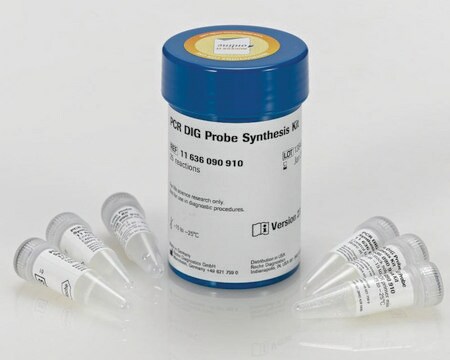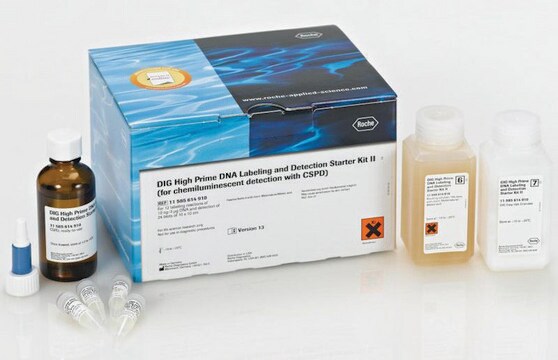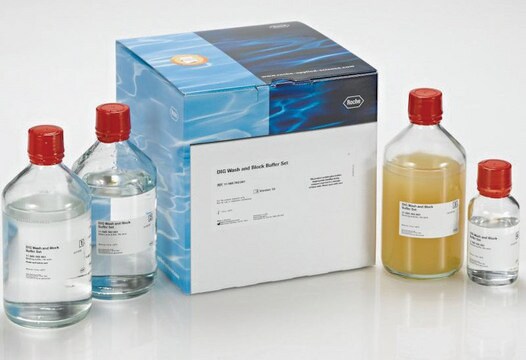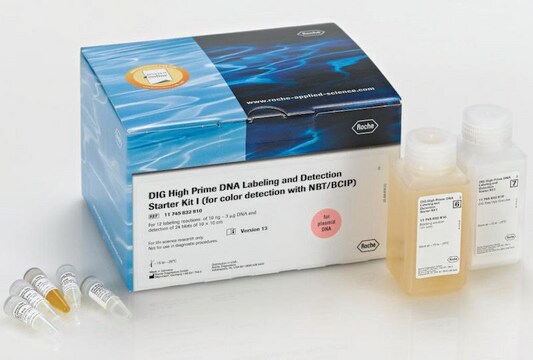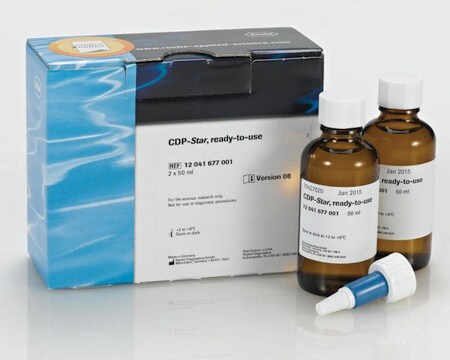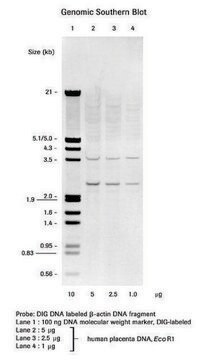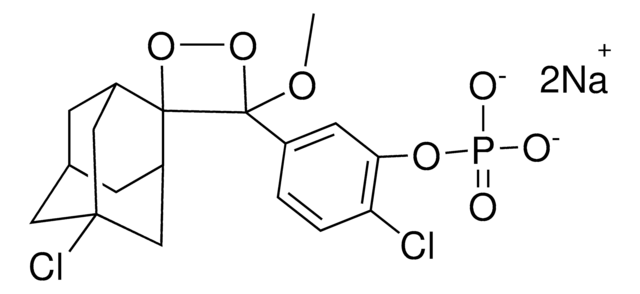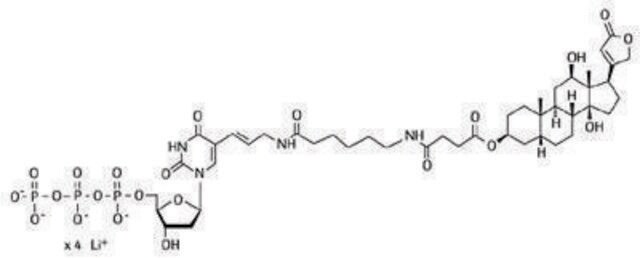11363514910
Roche
DIG Luminescent Detection Kit
sufficient for 50 blots (10 cm x 10 cm each), kit of 1 (5 components), suitable for hybridization
Synonyme(s) :
luminescent detection kit
About This Item
Produits recommandés
Essai
>98% (NMR)
Niveau de qualité
Utilisation
sufficient for 50 blots (10 cm x 10 cm each)
Conditionnement
kit of 1 (5 components)
Fabricant/nom de marque
Roche
Caractéristiques du produit alternatif plus écologique
Designing Safer Chemicals
Learn more about the Principles of Green Chemistry.
sustainability
Greener Alternative Product
Technique(s)
hybridization: suitable
Autre catégorie plus écologique
, Aligned
Température de stockage
−20°C
Description générale
We are committed to bringing you Greener Alternative Products, which adhere to one or more of The 12 Principles of Greener Chemistry. This product is designed as a safer chemical. The DIG System was established as a sensitive and cost-effective alternative to using radioactivity for the labeling and detection of nucleic acids. There are many available publications that prove the versatility of the DIG System, so use of radio-labeling is no longer the only option for labeling of DNA for hybridization.
Application
- critical commercial assays
- Southern hybridization
- northern analysis
- plaque or colony lifts with anti-DIG-AP conjugate and the chemiluminescent substrate CSPD. Chemiluminescent detection with CSPD (following the instructions of the kit) is as sensitive as radioactive methods, but requires much shorter exposure times.
Conditionnement
Caractéristiques
Notes préparatoires
- Storage conditions (working solution): Antibody conjugate (vial 3): once opened, should be stored at 2 to 8°C
- Blocking Reagent (bottle 4): in solution at 2 to 8°C
- CSPD (vial 5): at 2 to 8°C when frequently used. Repeated freeze/thaw cycles should be avoided.
Enzymatic dephosphorylation of the dioxetane CSPD by alkaline phosphatase leads to the metastable phenolate anion, which decomposes and emits light at 477nm. The light emission increases with time until a constant intensity is attained.
Assay Time
- Immunological detection 1.5 hours
- Signal detection 5 to 30 minute
Note: Store protected from light.
Autres remarques
Composants de kit seuls
- DIG-labeled Control DNA 5 µg/ml
- DNA Dilution Buffer
- Anti-digoxigenin-AP antibody, Fab fragments 750 U/ml
- Blocking Reagent
- CSPD 11.6 mg/ml
Code de la classe de stockage
11 - Combustible Solids
Classe de danger pour l'eau (WGK)
WGK 3
Point d'éclair (°F)
does not flashNot applicable
Point d'éclair (°C)
does not flashNot applicable
Faites votre choix parmi les versions les plus récentes :
Déjà en possession de ce produit ?
Retrouvez la documentation relative aux produits que vous avez récemment achetés dans la Bibliothèque de documents.
Les clients ont également consulté
Articles
Digoxigenin (DIG) labeling methods and kits for DNA and RNA DIG probes, random primed DNA labeling, nick translation labeling, 5’ and 3’ oligonucleotide end-labeling.
Notre équipe de scientifiques dispose d'une expérience dans tous les secteurs de la recherche, notamment en sciences de la vie, science des matériaux, synthèse chimique, chromatographie, analyse et dans de nombreux autres domaines..
Contacter notre Service technique